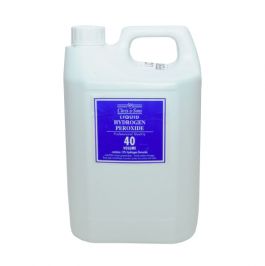G
Guest
Guest
Once BGA is in the substrate I don't think you can get rid of it?
Once BGA is in the substrate I don't think you can get rid of it?
A good point. It can be very persistent. I had it in a tank and tried a long term approach, I just left it to run its course and it fizzled out (took several months). The tank then recovered without any strip down and the plants regrew. It did look a mess in the intervening months.Once BGA is in the substrate I don't think you can get rid of it?

Yes, it is just available in different strengths. i.e. 1 ml of 12% plus 1 ml of water gives two mls at 6%. (12% is often available on eBay and I suspect my 11% was in fact 12% but there are nit pickers everywhere.all H2O2 is the same
Thank you.Yes, it is just available in different strengths. i.e. 1 ml of 12% plus 1 ml of water gives two mls at 6%. (12% is often available on eBay and I suspect my 11% was in fact 12% but there are nit pickers everywhere.
Good luck and have patience, you will get there in the end. Your tank looks good.
Hi @Once BGA is in the substrate I don't think you can get rid of it?
Cyanobacteria will not boil/produce O2 gas as it doesn't possess catalase, the enzyme that breaks down peroxide into water and oxygen.

doesn't possess catalase, the enzyme that breaks down peroxide into water and oxygen.
Looking at similar papers on bga, the stuff contains bio-Mn compounds that will react with H2O2 but not that readily unless pre-treated with NaCl solution. However strong H2O2 is a strong oxidising agent and will damage cells. I remember using 35% in the lab. Skin burns if you got a drop on you. Just had to be careful. In those days gloves were only worn in the winter to keep your hands warm when waiting for the bus.This paper would suggest otherwise, I think
Yes, very understandable, and my initial intention too. I guess I have an earlier breaking point than you! It was a very similar situation, I'd remove it all by hand and within 24 hours it would be like I hadn't touched it. I didn't take the decision lightly, but I'm glad I did it.Thanks Rob.
I am trying to stay away from chemicals as much as I can, but may be an option if I can't shift it and before I tear the tank down.
I have added an airstone that runs at night and have been doing large 80-90% changes every other day, but this stuff seems to grow back in a matter of hours. 🙁
Thanks Rob.Yes, very understandable, and my initial intention too. I guess I have an earlier breaking point than you! It was a very similar situation, I'd remove it all by hand and within 24 hours it would be like I hadn't touched it. I didn't take the decision lightly, but I'm glad I did it.
I'd tried all the usual things first like increasing oxygen, increasing flow, increasing water changes, and I'd also tried a product from ADA which I have forgotten the name of which didn't touch it.
Rob
...if it continues chemicals may be a good option, to at least knock it back.
Good points JPC.Hi @Nick potts
I think it's important to deal with this thing we have about 'chemicals'. What exactly do we mean by 'chemicals'? If I was to start talking about dihydrogen monoxide, would you use it in your tank? The fact is that you already are - it's water! And, what about humic acids, which are released by Catappa leaves, for example? And so on...and so on. Some 'chemicals' may have been produced in a laboratory but many are safe 'chemicals'. I mentioned Blue Exit whose active ingredient is salicylic acid. But, originally, this compound was extracted from the Willow tree. So, just because something comes out of a plastic bottle doesn't mean it's to be avoided. After all, we use fertilizers - dry or liquid - in our tanks without giving them a second thought.
Just my two penn'orth.
JPC
Hi @Nick pottsI know that a lot of the cyanobacteria killing products contain antibacterial agents etc and not something to be dosed without thinking over first

